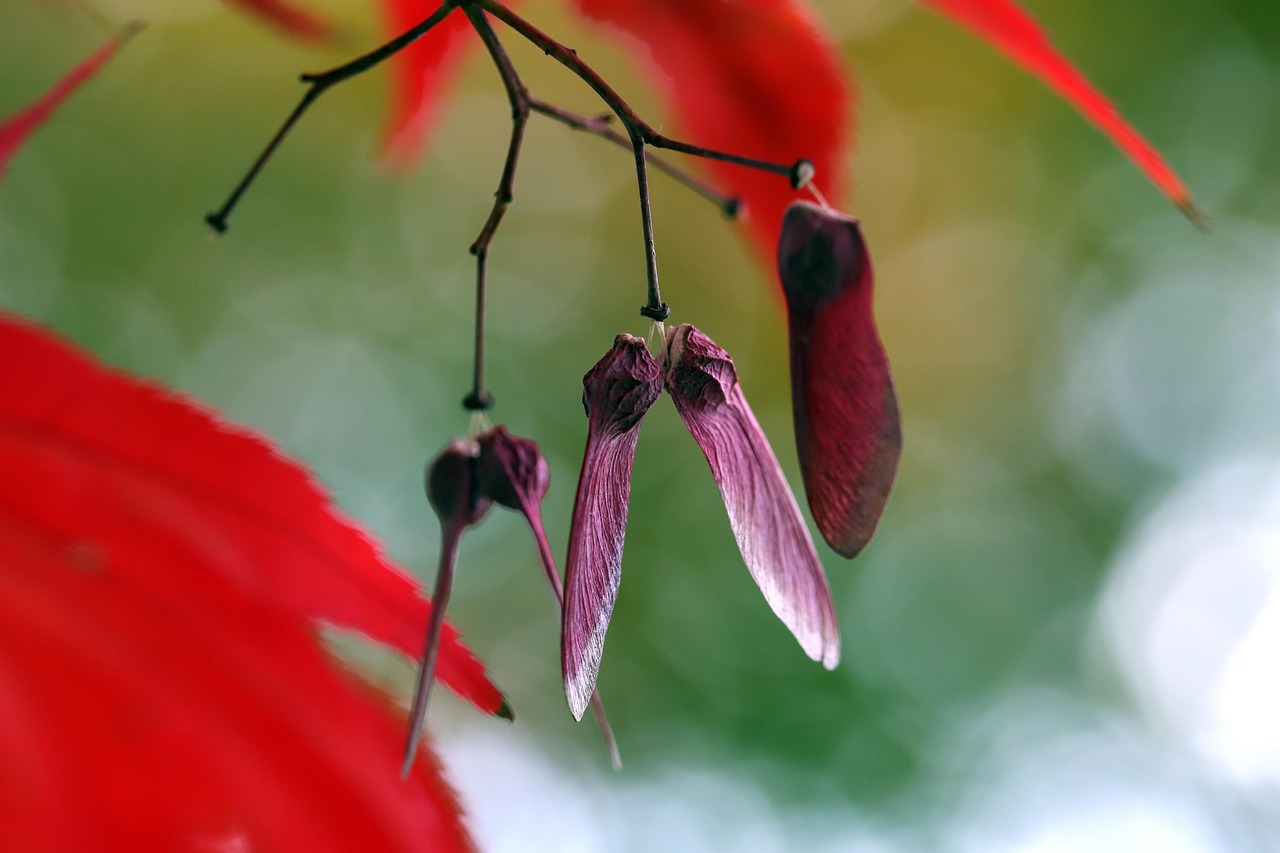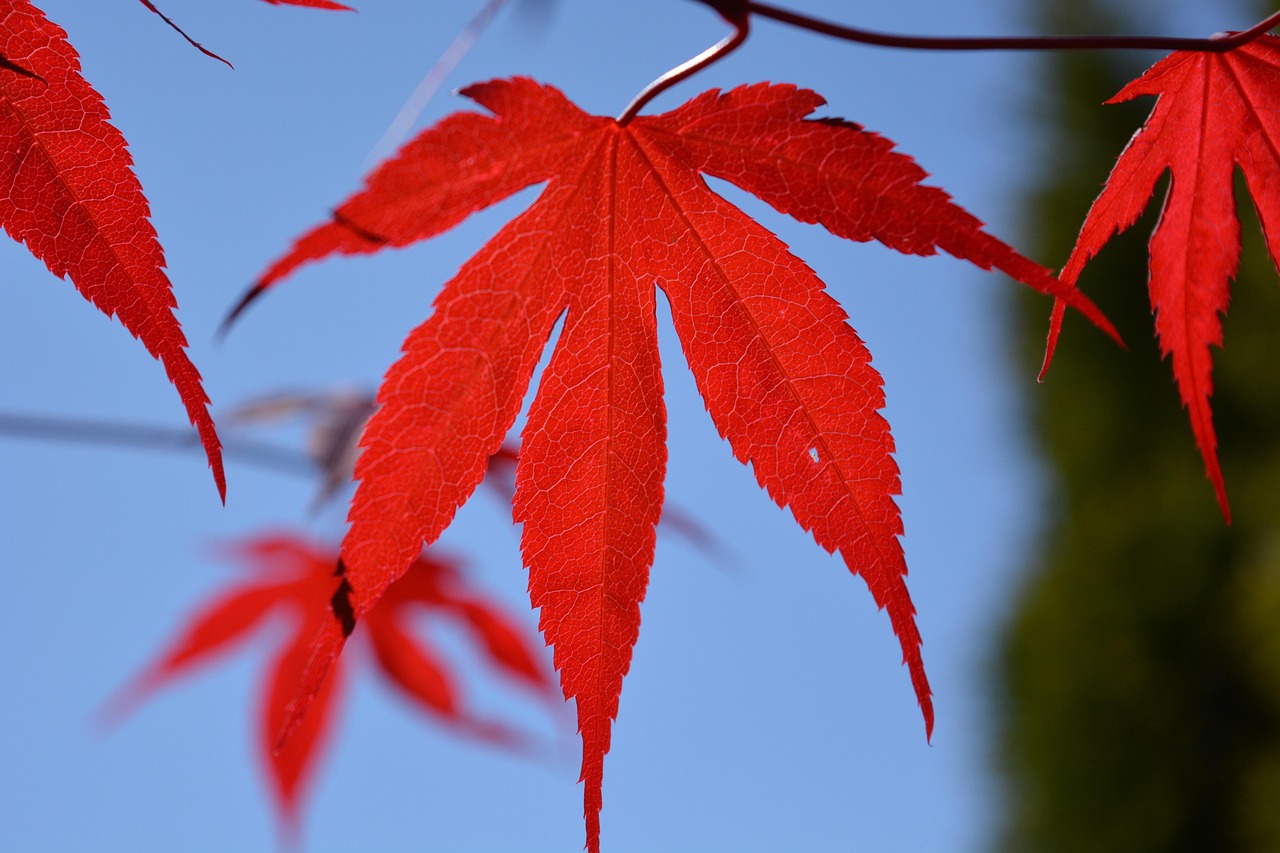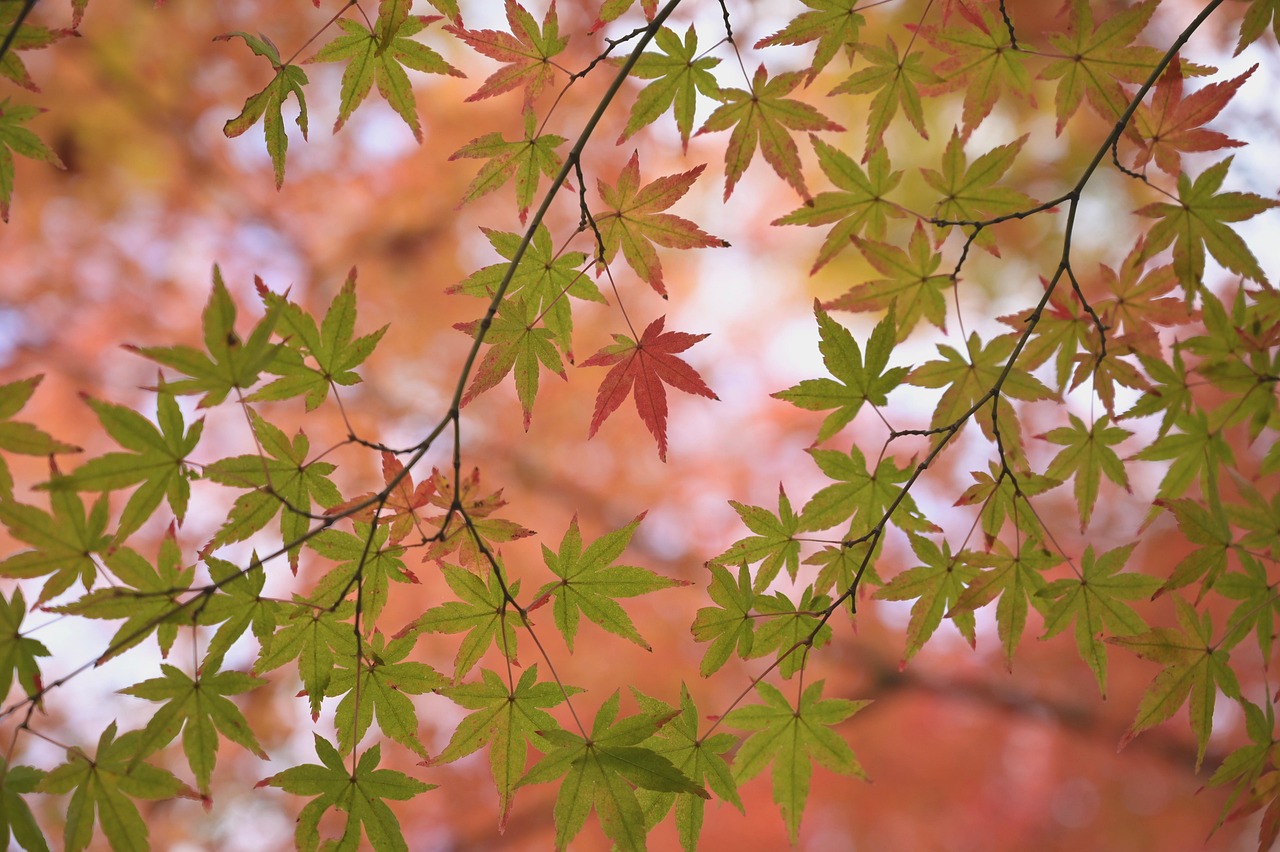Maple trees typically exhibit a growth rate of 1 to 3 feet per year, depending on the species and environmental conditions. Seasonal variations play a significant role in this growth pattern, influenced by temperature, soil moisture, and sunlight availability.
Understanding Maple Tree Growth Rates
Maple trees, known for their vibrant fall foliage and sweet sap, are beloved in many regions. They belong to the genus Acer and include various species such as the Sugar Maple, Red Maple, and Silver Maple. Each species has its unique characteristics, including growth rates and seasonal adaptations. Understanding these growth rates is crucial for proper care and management of maple trees.

The growth rate of a maple tree is affected by several factors. These include the species of the tree, the quality of the soil, climate conditions, and the availability of water. Generally, younger trees tend to grow faster than older ones. In their early years, maple trees can add significant height, often reaching up to 3 feet annually under optimal conditions.
Factors Influencing Growth Rates
Several key factors influence how quickly maple trees grow:
- Species: Different species have different growth rates. For instance, the Silver Maple grows faster than the Sugar Maple.
- Soil Quality: Nutrient-rich soil promotes faster growth. Soil pH also plays a role in nutrient availability.
- Water Availability: Consistent moisture is essential. Both drought and excessive water can hinder growth.
- Sunlight: Maple trees require plenty of sunlight to thrive. Insufficient light can slow their growth significantly.
- Temperature: Seasonal temperature fluctuations affect metabolic processes in trees. Warmer temperatures in spring promote early growth.
Seasonal Variations
Seasonal changes significantly impact the growth patterns of maple trees. The growing season typically spans from early spring to late summer. During this period, trees undergo various physiological changes that facilitate growth.

In spring, as temperatures rise and daylight increases, maple trees begin to break dormancy. This is when they start to produce new leaves and stems. The flow of sap also begins during this time, which is crucial for nutrient transport within the tree.
Summer is a period of robust growth for maple trees. Adequate rainfall and warm temperatures during this season contribute to higher photosynthesis rates. Trees can gain height and produce more leaves, which helps in energy production.
As summer transitions into fall, maple trees prepare for winter. Growth slows down as energy is diverted from new leaf production to strengthening the tree’s roots and trunk. The changing temperatures also signal a shift in nutrient allocation, leading to the beautiful autumn colors that maples are famous for.

Growth Rate Table by Species
| Maple Species | Average Growth Rate (Feet/Year) | Ideal Conditions |
|---|---|---|
| Sugar Maple | 1-2 | Nutrient-rich soil with good drainage |
| Red Maple | 2-3 | Moist soils; adaptable to various conditions |
| Silver Maple | 3-5 | Moist, well-drained soils |
| Acer Rubrum (Red Maple) | 1-2 | Wetlands; tolerant of poor soils |
The variations in growth rates among different maple species highlight the importance of choosing the right tree for specific environmental conditions. Understanding these aspects can help gardeners and landowners promote healthy growth.
The interaction between seasonal changes and growth rates is complex. While spring marks the beginning of active growth, summer solidifies those gains. Fall is a time for preparation before the dormancy of winter sets in. By recognizing these patterns, individuals can better care for their maple trees throughout the year.
Optimal Conditions for Maple Tree Growth
Understanding the optimal conditions for maple tree growth is essential for ensuring their health and longevity. Several environmental factors play a critical role in determining how well these trees develop over time.

Soil Characteristics
The type and quality of soil are fundamental to the growth of maple trees. Here are some key soil characteristics to consider:
- Drainage: Maple trees prefer well-drained soils. Poor drainage can lead to root rot and other complications.
- Nutrient Content: Soils rich in organic matter provide essential nutrients that promote rapid growth.
- pH Levels: Maple trees thrive in slightly acidic to neutral soils, ideally with a pH between 6.0 and 7.5.
- Soil Texture: Loamy soils, which contain a mixture of sand, silt, and clay, are ideal for maple growth.
Before planting a maple tree, it is beneficial to conduct a soil test. This test can reveal nutrient levels and pH, helping to identify any necessary amendments.
Climate Considerations
The climate where the maple tree is planted greatly influences its growth rate. Various climatic factors include:
- Temperature: Maples generally require a temperate climate. They experience active growth during warm months but can be sensitive to extreme heat.
- Precipitation: Adequate rainfall is crucial, especially during the growing season. However, too much rain can lead to waterlogged soils.
- Frost Dates: Knowing the last frost date in spring and the first frost date in fall helps determine the best planting times.
It is important to select a maple species well-suited for the local climate. For example, Red Maples are adaptable and can thrive in various conditions, while Sugar Maples prefer cooler climates.
Maple Tree Care Throughout the Seasons
Caring for maple trees involves specific practices tailored to each season. Proper care enhances their growth and ensures vibrant foliage in autumn.
Spring Care
As maple trees begin their active growth, following specific care practices can support their development:
- Mulching: Applying a layer of mulch around the base helps retain moisture and suppress weeds.
- Fertilization: A balanced fertilizer can promote healthy growth. It is best to fertilize in early spring before new growth starts.
- Watering: Regular watering is essential, especially if rainfall is sparse. Deep watering encourages strong root development.
Summer Care
During the summer months, the focus shifts to maintaining the health of the tree:
- Pest Management: Keep an eye out for pests such as aphids and borers. Early detection can prevent significant damage.
- Pruning: Prune any dead or diseased branches to maintain tree health and shape.
- Irrigation: Continue to provide water during dry spells. Young trees may require more frequent watering.
Fall Preparation
As fall approaches, preparing maple trees for winter is crucial for their survival:
- Leaf Cleanup: Rake fallen leaves to prevent fungal diseases that may arise if leaves remain on the ground.
- Winterizing: Protect the base of young trees with mulch or protective wraps to shield against freezing temperatures.
- Soil Testing for Spring: Conduct soil tests in the fall to prepare for any amendments needed for spring growth.
Pests and Diseases Affecting Maple Trees
Maple trees can be susceptible to various pests and diseases that may hinder their growth. Awareness and early intervention are key components of effective management.
Common Pests
The following pests are often found on maple trees:
- Aphids: These small insects feed on sap, weakening the tree.
- Maple Borers: Larvae of these beetles burrow into the tree, causing significant damage.
- Scale Insects: These pests attach themselves to branches and suck sap, stunting growth.
Diseases
A variety of diseases can also affect maple trees:
- Anthracnose: This fungal disease causes leaf spots and can lead to defoliation.
- Canker Diseases: Cankers can develop on branches, causing dieback and weakening the overall structure of the tree.
- Verticillium Wilt: A soil-borne fungus that affects the vascular system, leading to wilting and yellowing leaves.
Catching these issues early and applying appropriate treatments can significantly improve the health and longevity of maple trees.
Maple Tree Varieties and Their Growth Characteristics
Maple trees come in several species, each with distinct growth rates, environmental preferences, and ornamental features. Understanding these varieties can help gardeners choose the best type for their landscape needs.
Common Maple Species
The following are some of the most popular maple species, along with their unique characteristics:
- Sugar Maple (Acer saccharum): Known for its stunning fall colors and sap used for maple syrup, this species grows at a rate of 1-2 feet per year. It thrives in rich, well-drained soil.
- Red Maple (Acer rubrum): This adaptable species grows faster, at 2-3 feet per year. It can tolerate a variety of soil types and is often found in wetland areas.
- Silver Maple (Acer saccharinum): With a rapid growth rate of 3-5 feet per year, Silver Maples prefer moist, well-drained soils. They are known for their broad canopy and are commonly used for shade.
- Norway Maple (Acer platanoides): This species grows at a moderate rate of 1-2 feet per year. It is often planted for its dense foliage and strong structure.
- Japanese Maple (Acer palmatum): Although slower-growing at 1 foot per year, this ornamental tree is prized for its delicate leaves and striking form.
Growth Requirements by Species
Each maple species has specific growth requirements that should be considered for successful cultivation:
| Maple Species | Average Growth Rate (Feet/Year) | Soil Preference | Light Requirements |
|---|---|---|---|
| Sugar Maple | 1-2 | Well-drained, fertile | Full sun to partial shade |
| Red Maple | 2-3 | Wide range; prefers moisture | Full sun to partial shade |
| Silver Maple | 3-5 | Moist, well-drained | Full sun |
| Norway Maple | 1-2 | Well-drained, adaptable | Full sun to partial shade |
| Japanese Maple | 1 | Adequately moist, well-drained | Partial shade to full sun |
Selecting the right species based on the specific environmental conditions of your planting area can lead to better overall health and growth of the tree.
The Importance of Proper Pruning and Maintenance
Proper pruning and maintenance are essential for promoting healthy growth in maple trees. Regular care can enhance their structure, improve air circulation, and reduce the risk of disease.
Pruning Techniques
Pruning should be done at specific times during the year to promote optimal growth:
- Timing: Late winter or early spring is the best time for pruning before new growth starts. Avoid pruning in late summer or fall to prevent stress.
- Technique: Use clean, sharp tools. Make cuts at a slight angle just above a bud or branch junction.
- Aim: Focus on removing dead, damaged, or crossing branches. This encourages healthy growth and prevents crowding.
- Crown Thinning: Selectively remove branches to allow more light and air penetration into the canopy.
General Maintenance Practices
In addition to pruning, other maintenance practices can support maple tree health:
- Irrigation: Ensure consistent watering during dry spells, particularly for young trees. Established trees usually require less frequent watering.
- Fertilization: Apply a balanced fertilizer in early spring to support new growth. Conduct soil tests to determine nutrient needs.
- Pest and Disease Monitoring: Regularly inspect trees for signs of pests or diseases. Early detection is vital for effective treatment.
- Crown Cleaning: Remove any dead or diseased branches throughout the growing season to maintain tree health.
Environmental Factors Affecting Growth Rates
Certain environmental factors can significantly influence the growth rates of maple trees. Understanding these elements helps in managing their growth effectively.
Soil Moisture Levels
The moisture content in the soil directly impacts a tree’s ability to absorb nutrients and grow:
- Drought Conditions: Insufficient water can lead to stunted growth and increased susceptibility to disease.
- Excess Water: Overly saturated soils can cause root rot and other complications that hinder growth.
Sunlight Exposure
The amount of sunlight received by maple trees is crucial for photosynthesis and overall health:
- Full Sunlight: Most maple species thrive with at least six hours of direct sunlight daily.
- Shade Tolerance: Some species like Japanese Maples tolerate partial shade but may exhibit slower growth rates in low-light conditions.
A proper understanding of these environmental factors enables better management practices and supports the healthy growth of maple trees throughout the seasons.
Additional Considerations for Maple Tree Care
In addition to the factors previously mentioned, there are several other considerations that can enhance the growth and overall health of maple trees. These considerations can help gardeners make informed decisions when planting and maintaining their trees.
Companion Planting
Companion planting is the practice of growing different plants in proximity for mutual benefit. This technique can help improve the health and growth rates of maple trees:
- Beneficial Plants: Consider planting nitrogen-fixing plants, such as clover, near maple trees. These plants can enrich the soil with nitrogen, promoting healthier growth.
- Diversity: Incorporating a variety of plants around maple trees can enhance biodiversity, which may attract beneficial insects that help control pests.
- Ground Cover: Using ground cover plants can help retain soil moisture and reduce competition from weeds.
Urban Considerations
For those planting maple trees in urban environments, certain challenges may arise:
- Soil Compaction: Urban soils can be compacted, making it difficult for roots to grow. Aerating the soil or using raised beds can improve conditions.
- Pollution: Air and soil pollution can impact tree health. Choosing resistant species and ensuring proper care can mitigate these effects.
- Space Limitations: Consider the mature size of the tree when planting in urban areas to avoid interference with buildings, power lines, and sidewalks.
Seasonal Adjustments
Seasonal shifts require adjustments in care practices to support optimal growth:
- Winter Preparation: In colder climates, protecting young maples with burlap wraps or mulch can prevent frost damage.
- Spring Awakening: As temperatures rise, monitor soil moisture levels to ensure trees receive adequate water during their active growth phase.
- Fall Cleanup: Regularly clean up fallen leaves and debris to prevent diseases from overwintering.
Conclusion
Caring for maple trees involves understanding their growth rates, environmental needs, and seasonal variations. By selecting the right species and providing optimal soil conditions, sunlight exposure, and maintenance practices, gardeners can promote healthy tree growth. Additionally, being aware of pest management and seasonal care will further enhance the longevity and vitality of these beautiful trees.
The interaction between environmental factors and tree health is complex but manageable with the right knowledge. Whether one is cultivating maples for their stunning fall colors or for the sweet syrup they produce, proper care is essential. By following best practices in tree care and being proactive about potential challenges, anyone can enjoy the beauty and benefits of maple trees in their landscape for many years to come.
With this comprehensive understanding of maple tree growth rates and seasonal variations, individuals can make informed decisions that contribute to flourishing maple populations. Embracing these practices will not only benefit the trees themselves but will also enhance the surrounding ecosystem.
